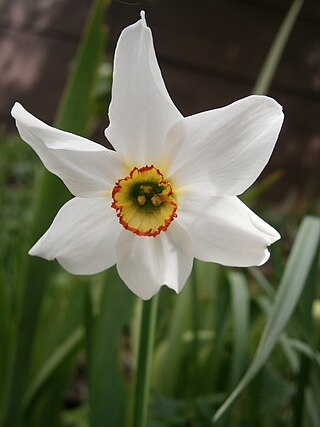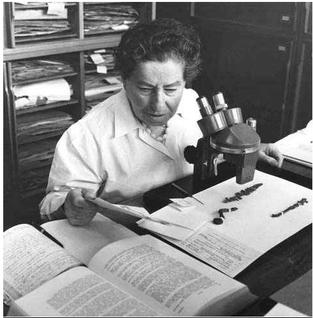Related Research Articles

Alectryon is a genus of about 30 species of trees and shrubs from the family Sapindaceae. They grow naturally across Australasia, Papuasia, Melanesia, western Polynesia, east Malesia and Southeast Asia, including across mainland Australia, especially diverse in eastern Queensland and New South Wales, the Torres Strait Islands, New Guinea, the Solomon Islands, New Caledonia, New Zealand, Vanuatu, Fiji, Samoa, Hawaii, Indonesia and the Philippines. They grow in a wide variety of natural habitats, from rainforests, gallery forests and coastal forests to arid savannas and heaths.

Arthur John Cronquist was an American biologist, botanist and a specialist on Compositae. He is considered one of the most influential botanists of the 20th century, largely due to his formulation of the Cronquist system as well as being the primary co-author to the Flora of the Pacific Northwest, still the most up to date flora for three northwest U.S. States to date. Two plant genera in the aster family have been named in his honor. These are Cronquistia, a possible synonym of Carphochaete, and Cronquistianthus, which is sometimes included as a group within Eupatorium. The former was applied by R.M. King and the latter by him and Harold E. Robinson.

Narcissus poeticus, the poet's daffodil, poet's narcissus, nargis, pheasant's eye, findern flower or pinkster lily, was one of the first daffodils to be cultivated, and is frequently identified as the narcissus of ancient times. It is also often associated with the Greek legend of Narcissus. It is the type species of the genus Narcissus and is widely naturalised in North America.

Flora of Australia is a 59 volume series describing the vascular plants, bryophytes and lichens present in Australia and its external territories. The series is published by the Australian Biological Resources Study who estimate that the series when complete will describe over 20 000 plant species. It was orchestrated by Alison McCusker.
Michael Zohary was a pioneering Israeli botanist.

Glaucium flavum, the yellow horned poppy, yellow hornpoppy or sea poppy, is a summer flowering plant in the family Papaveraceae. It is native to Europe, Northern Africa, Macaronesia and temperate zones in Western Asia. The plant grows on the seashore and is never found inland. All parts of the plant, including the seeds, are toxic. It is classed as a noxious weed in some areas of North America, where it is an introduced species. It is grown in gardens as a short-lived perennial but usually grown as a biennial.

Pancratium maritimum, or sea daffodil, is a species of bulbous plant native to the Canary Islands and both sides of the Mediterranean region and Black Sea from Portugal, Morocco and the Balearic Islands east to Turkey, Syria, Israel and the Caucasus. In the parts of its range on the south Bulgarian and north Turkish and Georgian coasts of Black Sea. It is also naturalized in southern California, Bermuda and the Azores.

Allium cernuum, known as nodding onion or lady's leek, is a perennial plant in the genus Allium. It grows in open areas in North America.

Elattostachys is a genus of about 21 species of trees known to science, constituting part of the plant family Sapindaceae.

Roemeria argemone is a species of flowering plant in the poppy family Papaveraceae. Its common names include long pricklyhead poppy, prickly poppy and pale poppy. Its native range includes parts of Eurasia and North Africa, but it can be found growing wild in parts of North America, where it is an introduced species. It is cultivated as an ornamental plant.

Allium acuminatum, also known as the tapertip onion or Hooker's onion, is a species in the genus Allium native to North America.

Parietaria floridana, common name Florida pellitory, is a plant species native to the southeastern United States, the West Indies, and much of Latin America. In the US, the heart of its range extends from Florida, to Georgia and North and South Carolina, with isolated populations reported in Mississippi, Louisiana, Texas, New Hampshire, Kentucky and Delaware. Some populations in California have in the past been referred to as P. floridana but are now regarded as a separate species, P. hespera.

Naomi Feinbrun-Dothan was a Russian-born Israeli botanist, who became part of the academic staff at the Hebrew University of Jerusalem. She studied the flora of Israel and published dozens of articles and several analytical flora books. Just after her 91st birthday, she received the 1991 Israel Prize for her unique contribution to the Land of Israel studies.

Iris petrana, commonly known as the Petra iris, is a species in the genus Iris, it is also in the subgenus of Iris and in the Oncocyclus section. It has spring blooming flowers that come in shades from burgundy, dark brown to dark violet and purple. They have yellow or dark 'beards' and flower over sword-like grey-green leaves. It is normally found in the desert sands between the countries of Jordan and Israel.
Elizabeth Alice Flint was a New Zealand botanist who specialised in freshwater algae. She co-authored the three-volume series Flora of New Zealand Desmids in the 1980s and 1990s.

Romulea columnae, the sand crocus, is a herbaceous perennial in the family Iridaceae. It is a small plant, with thin narrow leaves, and small scape which has small pink, pale purple or violet pointed flowers with darker veining and a gold or yellow throat. It is native to a wide area ranging from western Europe to the Mediterranean.
References
- ↑ "What is a Flora?". Flora of China (online). Harvard University Herbarium. Retrieved 2014-08-07.